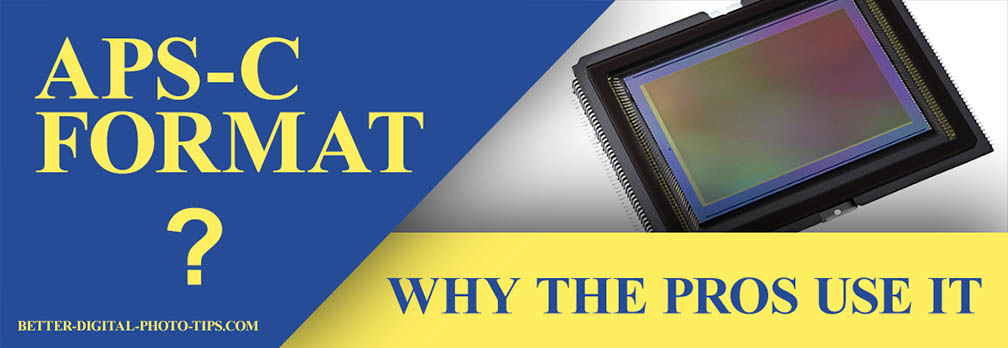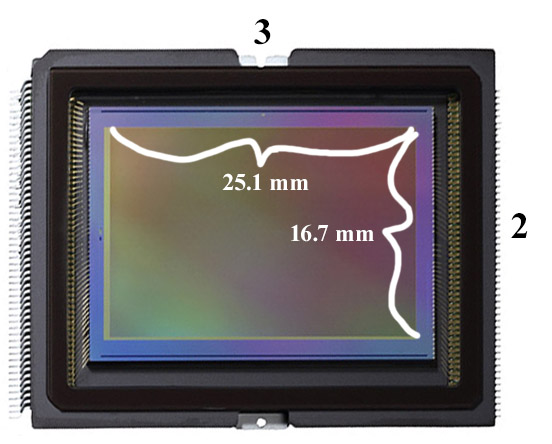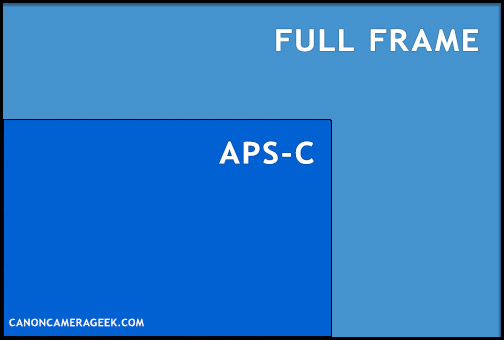HOW TO POSTS: LIGHTING AND COMPOSITION
the aps-c camera format explained

APS-C cameras use a smaller sensor format than full frame cameras. They're the most popular camera format on the planet for good reasons and we'll cover those points in a minute.
You've read about them, but it's still confusing to understand. This post will try to make it easier for you to understand what an APS-C sensor camera is, the advantages and disadvantages of using an APS-C camera, and a deeper look at why professional photographers would want to use them.
What is APS-C?
APS-C stands for Advanced Photo System type-C. It refers to a camera sensor size that is about 25% smaller than a full-frame sensor. APS-C sensors are used in many different types of cameras, from beginner -level DSLRs and mirrorless cameras, to pro-sumer cameras, to high-end professional cameras.
APS-C cameras are smaller, lighter, easy to use, and cheaper to buy. The lenses for them are smaller, lighter, easier to carry, and more affordable. Image and video quality exceeds the full frame Pro DSLRs of just a few years ago, for a fraction of the price. - PRO PHOTOGRAPHER, BRUCE LOVELACE
the aps-c abbreviation
APS-C is the commonly used abbreviation for Advanced Photo System-Classic. You really don't need to remember that. The more important thing to remember is that the letter C in APS-C can be thought of as a Cropped sensor. It's a smaller cropped version of the 36mm x 24mm sensor, which is called a full frame camera sensor.
APS-C Sensor size
The physical dimensions of the APS-C are 25.1mm wide by 16.7 mm tall for Canon and all variations (Nikon, Sony, etc.) are a similar size. This format gives you the standard aspect ratio of 3:2, the most common width by height ratio in the world of photography.
An APS-C sensor is about 1 inch wide and about 2/3 inch high. I know what you're thinking. That's pretty small. Yes, it is, but the sensor makers can still squeeze in multiple millions of light sensitive pixels to create large high quality images. The technology that has been developed for APS-C sensors is nothing short of remarkable.
disadvantages of shooting APS-C
1. LENS SELECTION. Camera companies offer more of the highest quality lens choices for their premium line of cameras. There are still plenty of good solid choices for APS-C, just not as many as the full frame "pro" cameras, although the full frame lenses will also will work on the APS-C cameras. You just need to be aware of the crop factor.
2. UPGRADING. If you start with an APS-C camera and the associated APS-C lenses, you'll have to upgrade your lenses to full sized lenses in order to fit the full frame cameras if you want to upgrade your camera. It's unlikely that you'll need to upgrade to full frame unless you become a pro photographer.
3. DIGITAL NOISE. Individual light-collecting pixels are generally smaller on the APS-C sensors. They're not as efficient at collecting light as the larger pixels of full-frame camera sensors.. In low-light situations you're more likely to see digital noise as a result.
4. DEPTH OF FIELD. With a larger sensor there is no crop factor. You can move closer to your subject with any give lens and intentionally get a shallow depth of field and a more pleasing out of focus background behind your subject.
advantages of shooting APS-C
1. FASTER. There is less data to process from the smaller sensor. Therefore, you can save images to your memory card faster and shoot more frames in burst mode.
2. MEMORY STORAGE. Files are smaller. More will fit on the camera memory card and your computer hard drive.
3. LENS COMPATIBILITY. You can use APS-C or full frame lenses on the APS-C camera bodies.
4. COST. Crop sensor cameras are more affordably priced. that gives you money left over to buy another lens, a good tripod, or some other helpful camera accessory.
why pro photographer (LIKE ME) shoot with APS-C cameras
Yes, there are some professional photographers who shoot with APS-C sensors. Despite the tenet that you should always have the best equipment available, sometimes the top of the line gear isn't necessary to use at all.
|
Two of my recent camera purchases were ....you guessed it, APS-C crop sensor cameras. A Canon 90D DLSR and a Canon R7 mirrorless. Here's why you you should consider buying an APS-C crop camera. BURST RATE. It's easier to get faster burst rates from a smaller camera and shutter. I get 10 frames per second. My full frame 5D mark III only does 6 frames per second. UNCROPPED VIDEO. I can shoot either 4k or 120 HD without any sensor cropping like some of the full frame DSLRs have to use. CASH. Rather than buy another full frame, I was able to buy an APS-C "crop" camera for less than half of a new full frame sensor camera. I really struggled with my personal situation and whether to get another full frame or another APS-C crop camera. In the end I went the cheaper route because the 90D really had everything I wanted. I hope this post was useful to you and helped you understand more about the APS-C camera format, so that you can do what's best for your situation. Thanks for reading my post about APS-C crop cameras. I hope you found it valuable. To find another post on this website for another topic you can use the search box below, or find a related topic if you scroll down to other posts below my signature. |
|
Search for a new topic on this site:


ABOUT BRUCE LOVELACE
Bruce is the publisher of this website. He is the author of the book "Improve Your Photography Instantly." Read more on Bruce on his Bio Page. He's been known as The Traveling Photographer ever since 1994. Read more about this website.
View some of Bruce's photos on Instagram. Visit the Facebook Page. Watch him on YouTube. Bruce runs photo workshops for kids and adults, and provides one-on-one photography coaching.
Digital Photography Education Location on Google My Business











